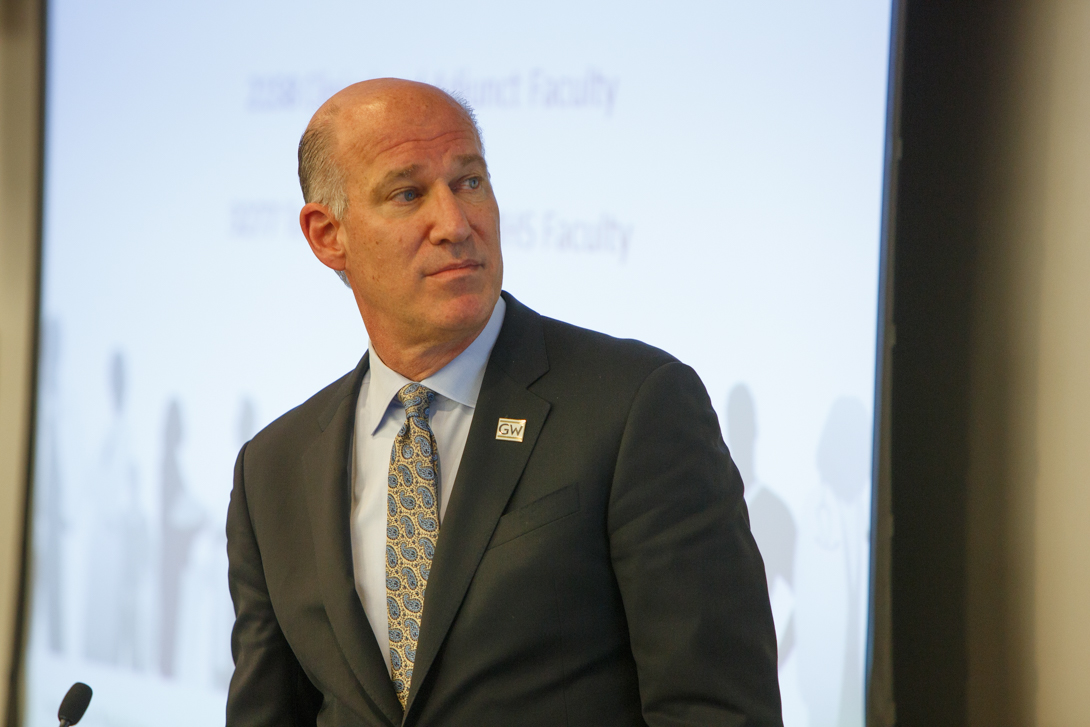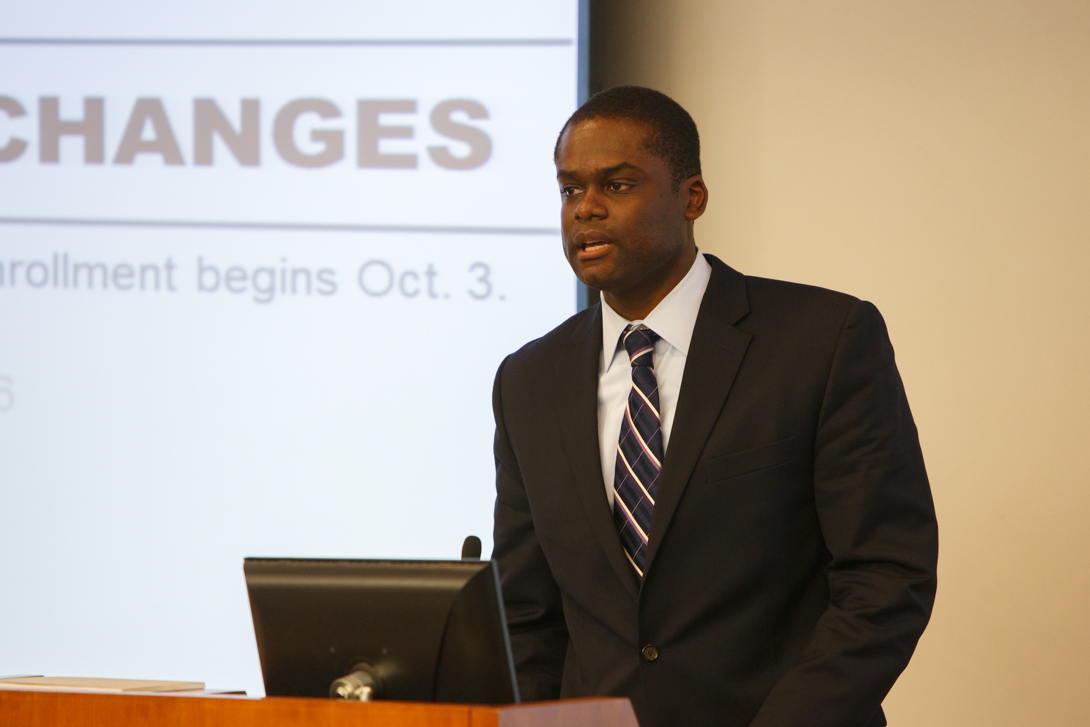Changes to employee health benefits and advances in medical research and education took center stage at Friday’s Faculty Senate meeting.
The meeting, led by President Steven Knapp, began with an update on the search for a new university president and the selection of the Faculty Consultative Committee, which will provide input during the process.
Nine of the committee’s 16 members were approved during a special Faculty Assembly session, held earlier in the day Friday. An additional seven committee members will be chosen by the Faculty Senate Executive Committee and approved by the Faculty Senate, as requested by the Faculty Assembly.
Charles Garris, chair of the Faculty Senate Executive Committee, outlined the process for selecting the remaining seven faculty members and said the senate is tasked with ensuring those chosen represent the diverse interests of the faculty.
Jeff Akman, dean of the School of Medicine and Health Sciences and vice president for health affairs, then provided an update on programming and research in his school.
SMHS, he said, is in the process of implementing a revised M.D. curriculum. Reforms include better integrating basic sciences, clinical and public health; emphasizing active learning and clinical experience; improving professional development; capitalizing on the school’s D.C. location; and integrating technology into the curriculum.

Jeff Akman, dean of the School of Medicine and Health Sciences and vice president for health affairs. (William Atkins/GW Today)
“We’ve reduced the amount of lecture time, increased the amount of active learning and team-based learning,” said Dr. Akman.
The school received a record 12,393 applications for the 177 positions in the M.D. class of 2020. Earlier this year, SMHS received full accreditation for eight years from the Liaison Committee for Medical Education after being found in compliance with all standards.
Dr. Akman also stressed the importance of the school’s 57 health sciences degree and certificate programs, many of which have a growing presence on the Virginia Science and Technology Campus.
Another priority for the school has been advancing discovery and improving health outcomes through research. The number of research awards has nearly doubled, said Dr. Akman, and SMHS continues to focus on research faculty recruitment, increased research infrastructure and labs, and fostering clinical and translational science.
Dr. Akman highlighted the Cancer Center and the Ron & Joy Paul Kidney Center as examples of collaborative efforts that have the potential to further understanding of disease and also provide a platform for community education and outreach. “We are recruiting and growing and have an exciting opportunity to build world-class centers here,” he said.
After Dr. Akman’s presentation, Interim Vice President for Human Resources Dale McLeod discussed health care benefits changes for 2017 ahead of open enrollment for employees in October.
“Our goal is to ensure a benefits plan structure that is equitable and to pass along as much of the savings to employees as possible,” he said.
Employees will have a choice between a single PPO plan and a Health Savings Plan option for health benefits in 2017. The single PPO plan merges two PPO options and will result in lower premium costs for some employees and additional coverage for others.
Under the Health Savings Plan, formerly called the High Deductible Health Plan, premiums will remain the same. GW also will increase the amount it matches employee health savings account contributions up to $600 for an individual or $1,200 for a family. Employees will be able to roll over their health savings accounts at the end of the year.
Other changes for 2017 include a movement toward specialized Centers of Excellence, which are optional but provide better rates; incentivizing telemedicine; and adding acupuncture coverage. The university is also piloting a tool to help employees better understand health care costs in advance.
Mr. McLeod said Human Resources does not anticipate any large-scale changes to plan offerings in upcoming years. “We feel confident these plan design changes can remain relatively static going forward,” he said.
In remarks prior to Mr. McLeod’s presentation, Dr. Garris outlined faculty concerns about health benefits plan offerings, including the decrease in options, the pace of the decision-making process and lack of stability in plan offerings year to year. In response to concerns, Deputy Treasurer Ann McCorvey discussed efforts to ensure a collaborative process, and the Provost's Office will review the budget trade-off for benefits with members of the Faculty Senate.
In his remarks, Provost Forrest Maltzman highlighted undergraduate enrollment achievements. The university “hit virtually all targets in terms of enrollment,” he said. “The undergraduate class is much more diverse than it ever has been before.” And, he said, the quality of the class is “extremely strong.”
Dr. Knapp, in closing, outlined his priorities for his last year as president, chief among them, supporting deans during the final phase of the university’s “Making History” campaign, which has raised $880 million to date. He will also continue to focus on access and success efforts and building the university’s worldwide and lifelong community of alumni.

GW President Steven Knapp. (William Atkins/GW Today)


